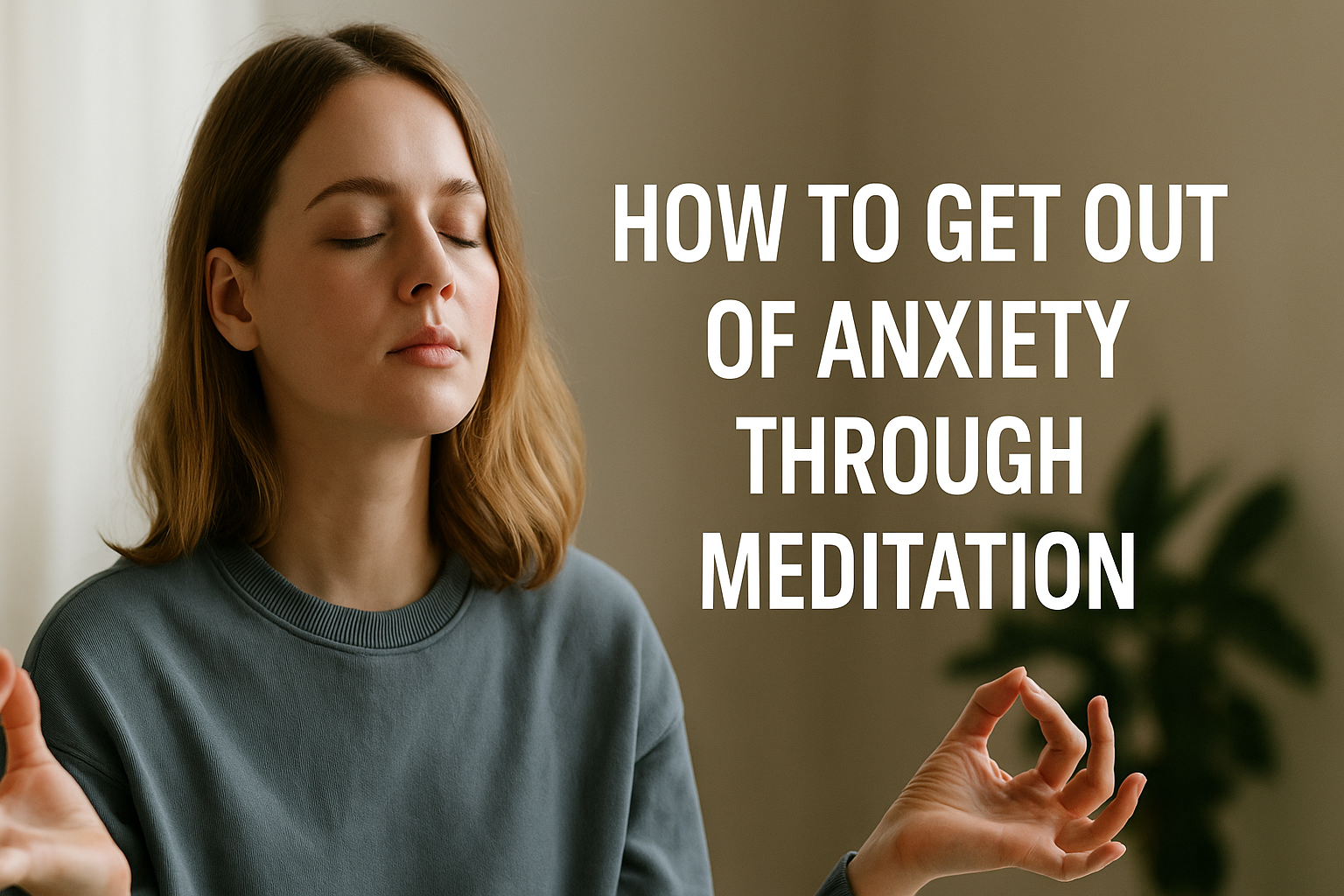How to Get Out of Anxiety Through Meditation
Use the power of stillness and breath to calm your mind and ease emotional tension
When Your Thoughts Feel Like a Storm You Can’t Escape
Anxiety often arrives without warning — racing thoughts, a pounding heart, shortness of breath, and a sense of dread that seems impossible to shake. It can feel like your mind is spinning out of control while your body braces for something that may never come.
If you’ve ever felt trapped in this loop, you’re not alone. Anxiety affects millions of people every day. But here’s the good news: you can break the cycle. One powerful, research-backed tool to help calm anxiety is meditation.
In this article, we’ll explore how to get out of anxiety through meditation — what makes it effective, how to practice it, and how to make it a lasting part of your healing journey.
—
Understanding Anxiety and the Mind
What Causes Anxiety?
Anxiety is a natural response to stress, uncertainty, or perceived threats. While occasional anxiety is part of being human, chronic anxiety can hijack your thoughts and overwhelm your nervous system.
It’s not just “in your head” — anxiety triggers a fight-or-flight response, releasing cortisol and adrenaline. Over time, this can affect sleep, focus, digestion, and overall well-being.
The Role of Overthinking
An anxious mind tends to fixate on “what if” scenarios, often imagining worst-case outcomes. This mental habit can become exhausting and self-reinforcing. Meditation offers a way to step out of the storm of thoughts and reconnect with the present moment.
—
How Meditation Helps Ease Anxiety
1. It Anchors You in the Present
Most anxiety is future-focused — worries about what might happen. Meditation brings your attention to the now: your breath, your body, your surroundings. This shift calms the nervous system and stops the mind from spiraling.
2. It Regulates the Nervous System
Mindful breathing, a core part of meditation, activates the parasympathetic nervous system — also known as the “rest and digest” mode. This counters the stress response and promotes a sense of safety and calm.
3. It Creates Space Between You and Your Thoughts
Meditation doesn’t silence your thoughts — it changes your relationship with them. You learn to observe anxious thoughts without getting swept away. Over time, you realize: “I am not my anxiety.”
—
Beginner-Friendly Meditation Techniques for Anxiety
1. Mindful Breathing
How it works: Sit comfortably. Inhale slowly through your nose for 4 counts, hold for 2, and exhale through your mouth for 6. Repeat for a few minutes.
This breathing pattern helps slow your heart rate and shift your body into a calmer state.
2. Body Scan Meditation
How it works: Close your eyes and mentally scan your body from head to toe. Notice areas of tension, pain, or restlessness. Simply observe without trying to fix.
This builds awareness and promotes relaxation through physical presence.
3. Guided Meditation for Anxiety
Apps like Calm, Insight Timer, or Headspace offer specific meditations for anxiety. A gentle voice guides you through breathing, visualization, or affirmations to support mental stillness.
4. Loving-Kindness (Metta) Meditation
This practice involves silently repeating phrases like “May I be safe. May I be calm. May I be at ease.” Then extend the same wishes to others.
Loving-kindness softens self-criticism, a common component of anxiety, and builds compassion.
—
Tips for Meditating When You’re Anxious
Start Small
Even 3–5 minutes of meditation can make a difference. Don’t pressure yourself to sit for long periods. Focus on consistency, not duration.
Let Go of “Doing It Right”
There’s no perfect way to meditate. If your mind wanders — that’s okay. Gently return to your breath. That moment of returning is the practice.
Use a Calm Environment
Find a quiet space, dim the lights, and sit comfortably. You can even meditate lying down if sitting feels uncomfortable. Comfort helps the body relax into the experience.
Try Moving Meditation
If sitting still is hard during anxiety, try walking meditation. Focus on your steps, your breathing, and the sensations in your body. Movement can be grounding.
—
Making Meditation Part of Your Daily Routine
Attach It to an Existing Habit
Meditate right after brushing your teeth or before bed. Linking it to a habit helps make it automatic and sustainable.
Use Reminders
Set a daily alarm or calendar event labeled “Breathe” or “Pause.” Visual cues help you remember to return to yourself throughout the day.
Track Your Progress
Keep a journal or use a meditation app to log your sessions. Seeing your consistency builds motivation and reinforces your growth.
—
What to Expect Over Time
Less Reactivity
You may start noticing a pause between a trigger and your response. That pause is power — it allows you to respond with intention instead of anxiety.
More Inner Stability
Even if stressors don’t disappear, your internal world becomes more steady. Meditation helps build emotional resilience and self-trust.
A New Relationship with Yourself
As you sit with your breath, body, and thoughts, you begin to relate to yourself with more kindness, patience, and presence. This shift can be life-changing.
—
Conclusion: You Can’t Always Control Anxiety — But You Can Learn to Calm the Mind
Anxiety may visit often — but it doesn’t have to stay in charge. Through meditation, you build an inner refuge. A place you can return to, no matter what’s happening around you.
You don’t have to fix every thought — just learn to sit with them, breathe, and let them pass.
✨ Want to begin today? Take five minutes. Close your eyes. Feel your breath. That small act of presence is where peace begins. Subscribe for guided meditations, breathing tools, and weekly support to help you manage anxiety and reclaim your calm.

Leave a Reply